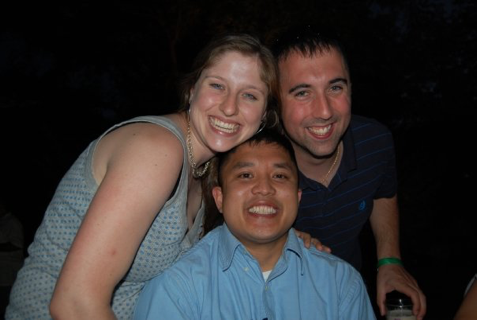Jake Potter was not aware of the Student Government Association’s presence.
“I don’t really see SGA doing a lot,” the freshman political science and history double major said. “It’s not really visible to me what they do.”
In an effort to connect to more students like Potter, SGA members are focusing on using social media sites, such as Facebook and Twitter this semester.
Vice President for Operations Joshua Simpson said the focus on social media was a way for SGA to communicate better with students. Students would also be able to give SGA more feedback than in the past, he said.
However, some students like Potter said they were not sure if they would use the SGA social media sites.
Simpson said SGA has discovered a communication gap between students and their representatives.
The use of social media was an attempt to bridge that gap, he said.
“It is important that students not just know what [SGA] is doing or what we’re about but how they’re benefiting from us,” he said. “I think social media is a great first step in that direction.”
An example of this step would be when SGA posted the results of the Board of Trustees’ retreat on the organization’s Facebook page, he said.
Director of Communication Jaclyn Cravello said students use social media websites like Facebook and Twitter often, and these websites would be a good way to spread awareness about SGA.
This focus could allow students to become better involved in SGA by knowing what is going on or by having an easier outlet for students to contact their representative, she said.
Lauren Sharp, the chairwoman of the Student Relations committee, said meeting times for committees would be posted on the new SGA website as well as legislation SGA has passed.
This would keep the student body updated on what SGA is doing, she said. It would also be convenient for students to follow SGA on Facebook and Twitter, she said.
“It takes about 30 seconds to like us on Facebook,” she said.
Simpson said he believed social media was the cheapest and best way to contact students.
“Instead of putting [information] on a flyer, we’re making a flyer that directs them to our Facebook page,” he said. “I think it’s a more natural way of communicating what happens.”
Potter said he did not use social media often and he only went on Facebook to talk to friends. He would probably not check the SGA Facebook page or the Twitter account, he said.
Sophomore communication studies major Shannon Sweeney said she liked that SGA was becoming more public, but she was not necessarily interested enough in SGA to follow them on social media.
Potter and Sweeney both agreed the focus on social media would help with the communication between SGA and the student body.
Sophomore religion and sociology double major Zoey Murzyn said she was already following SGA on Facebook. The focus on social media would make SGA more accessible and give more power to students, she said.
Simpson said there would not be too much information posted on the social media websites because he wanted to make sure that only meaningful information would be posted.
“We don’t want to say too much. We don’t want to say too little,” he said. “We want to tell [the student body] the right information at the right time in a way that’s meaningful.”
That would require a learning curve on the part of SGA, he said.
Sharp said SGA used marketing campaigns to spread awareness about the new focus on social media, she said.
One example of these campaigns was the Valentine’s Day campaign, she said, which involved signs on campus that told students that SGA “liked” them and that students should “like” SGA on Facebook, led to 100 more students following the SGA Facebook page, she said.
New campaigns will be in the future, she said.
Simpson said one of the goals of the new focus on social media was for the Facebook page to have 500 students following them, by the end of the semester.
According to the SGA Facebook page as of April 11,242 people had liked the page.
Simpson said the organization was always going to try to get more students to follow them on Facebook and Twitter.
SGA was also exploring other media, such as videos funneled through the Facebook page, in order to connect with the student body, he said.
This new focus on social media could only improve the relationship between the student body and SGA, he said.



